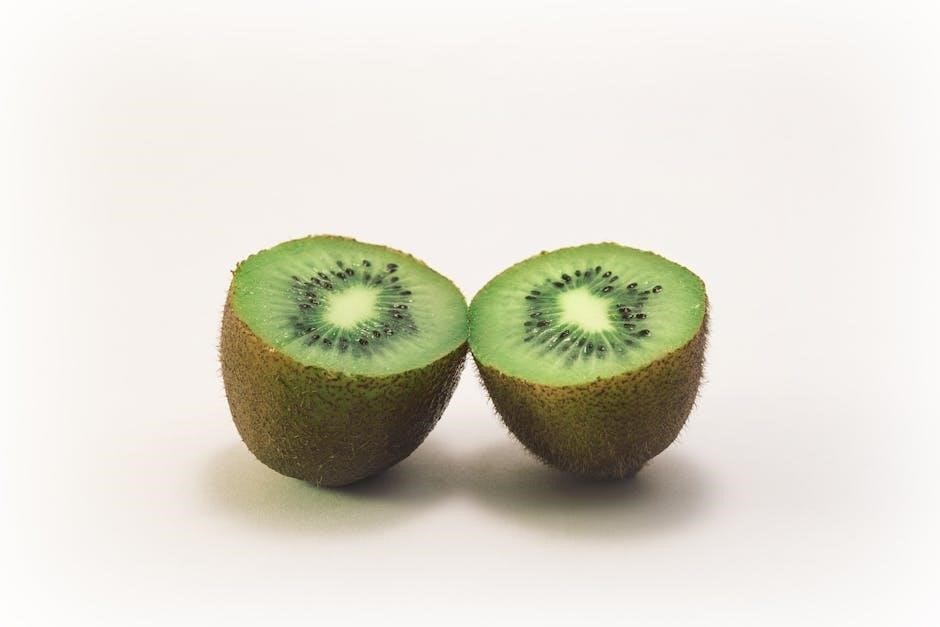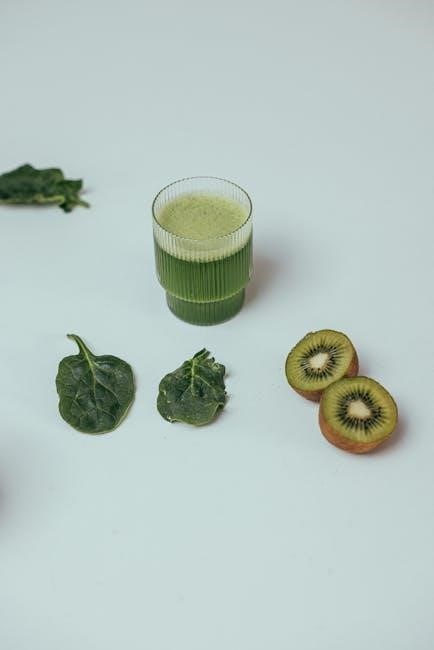k&n air filter oil instructions
- Published
- in Instructions
K&N Air Filter Oil Instructions: A Comprehensive Guide
This guide provides step-by-step instructions on how to properly clean and oil your K&N air filter․ We’ll cover everything from choosing the right oil to drying the filter․ Learn how to avoid common mistakes and maximize your filter’s performance for optimal results․

K&N air filters are designed to enhance engine performance and provide superior filtration compared to traditional paper filters․ Their unique design uses layers of oiled cotton gauze to trap dirt and debris while allowing for increased airflow․ This increased airflow results in improved horsepower and acceleration․
Oiling is a crucial part of maintaining a K&N air filter․ The oil acts as a tacking agent, capturing fine particles that would otherwise pass through the cotton gauze․ Without proper oiling, the filter’s ability to trap dirt is severely compromised, potentially leading to engine damage and reduced performance․
Furthermore, the oil helps to maintain the filter’s cotton fibers, preventing them from drying out and becoming brittle․ This extends the lifespan of the filter, making it a worthwhile investment for any vehicle owner․ Re-oiling your K&N filter after cleaning is essential to restore its filtration efficiency and ensure optimal engine protection․
By following the correct oiling procedures, you can ensure that your K&N air filter continues to deliver the performance and protection that it was designed for․ This comprehensive guide provides you with the necessary steps to achieve optimal results․
Tools and Materials Needed for Oiling
Before embarking on the K&N air filter oiling process, it’s crucial to gather the necessary tools and materials․ Having everything readily available will ensure a smooth and efficient procedure, minimizing potential delays and ensuring optimal results․ Here’s a comprehensive list of what you’ll need:
- K&N Air Filter Cleaning Kit: This kit typically includes both the air filter cleaner and the air filter oil․ Ensure you have the correct type of oil for your filter, either aerosol spray (99-5000) or squeeze bottle (99-5050)․
- K&N Air Filter Cleaner: Specifically designed to remove dirt and debris from K&N air filters without damaging the cotton gauze․ Alternatives like harsh solvents can degrade the filter material․
- Soft Brush (Optional): A soft-bristled brush can help to loosen stubborn dirt and debris before cleaning․
- Low-Pressure Water Source: A gentle stream of water is needed to rinse the filter after cleaning․ Avoid using high-pressure washers, as they can damage the filter․
- Clean Work Surface: Choose a clean and well-ventilated area to work on your filter․
- Gloves (Optional): To protect your hands from the cleaner and oil․
- Lint-Free Cloth or Paper Towels: For wiping up any spills․
Step 1: Cleaning the K&N Air Filter
The first and arguably most important step in re-oiling your K&N air filter is to thoroughly clean it․ A clean filter ensures that the new oil can properly saturate the cotton gauze and effectively trap dirt and contaminants․ Begin by carefully removing the filter from your vehicle․ Once removed, gently tap the filter to dislodge any loose dirt or debris․ For more stubborn particles, use a soft brush to carefully loosen them, being mindful not to damage the filter material․
Next, apply the K&N air filter cleaner liberally to both sides of the filter․ Ensure that the entire surface is covered, paying particular attention to heavily soiled areas․ Allow the cleaner to soak for approximately 10 minutes․ This soaking period allows the cleaner to penetrate and loosen embedded dirt and oil․ After soaking, rinse the filter with a gentle stream of low-pressure water, working from the clean side to the dirty side․ Continue rinsing until all traces of the cleaner and dirt are gone․

Step 2: Drying the Air Filter Completely
After thoroughly cleaning your K&N air filter, the next crucial step is to ensure it is completely dry before applying new oil․ Introducing oil to a damp filter can hinder proper saturation and reduce its filtration effectiveness․ Excess moisture can also lead to the growth of mold or mildew within the filter material, compromising its integrity and lifespan․
To dry the filter, gently shake off any excess water․ Then, allow the filter to air dry naturally․ This is the preferred method, as it minimizes the risk of damage to the delicate cotton gauze․ Avoid using heat sources such as hair dryers or direct sunlight, as excessive heat can cause the cotton fibers to shrink or become brittle․ Depending on the ambient temperature and humidity, the drying process may take several hours or even overnight․
To speed up the drying process slightly, you can place the filter in a well-ventilated area or use a fan to circulate air around it․ However, always ensure that the airflow is gentle and indirect to prevent any damage․ Before proceeding to the next step, carefully inspect the filter to confirm that it is completely dry to the touch, inside and out․
Step 3: Applying K&N Air Filter Oil (Aerosol Spray)
Once your K&N air filter is completely dry, it’s time to re-oil it using the K&N air filter oil aerosol spray․ This step is crucial for restoring the filter’s ability to trap dirt and contaminants effectively․ Before you start, make sure you’re working in a well-ventilated area to avoid inhaling the oil fumes․ Also, protect your work surface with newspaper or a drop cloth to prevent any oil spills․
Hold the aerosol can about 3 inches away from the filter․ Begin spraying the oil evenly along the crown of each pleat․ Move the can in a smooth, consistent motion to ensure uniform coverage․ Avoid applying too much oil in one spot, as this can lead to over-oiling, which can restrict airflow․ Instead, apply a light, even coat to each pleat, working your way around the entire filter․
After applying the initial coat, allow the oil to wick into the cotton gauze for approximately 20 minutes․ This will give the oil time to penetrate the filter material and create a consistent barrier․ After the wicking period, inspect the filter for any light areas that may have been missed․ Touch up these areas with a light spray, ensuring that all surfaces are evenly coated with oil․
Aerosol Oil Application Technique (99-5000)
When using the K&N air filter oil aerosol spray (typically found in the 99-5000 cleaning kit or as a standalone 12․25 oz aerosol), the application technique is paramount for achieving optimal filtration and performance․ Begin by ensuring your cleaned and dried K&N air filter is placed on a protected surface in a well-ventilated area․ The key to proper aerosol application is maintaining a consistent distance and even spray pattern․
Hold the aerosol nozzle approximately 3 inches away from the filter pleats․ This distance allows for a controlled and even distribution of the oil․ Spray the oil uniformly along the crown of each pleat, moving the can in a smooth, continuous motion․ Avoid the temptation to saturate any single area; instead, focus on applying a light, consistent coat across the entire filter surface․ The goal is to achieve a uniform red color, indicating proper oil saturation․
After the initial application, allow the oil to wick for about 20 minutes․ This wicking process allows the oil to penetrate the cotton gauze material, ensuring thorough filtration․ After the wicking period, carefully inspect both sides of the filter for any light or un-oiled areas․ Touch up these spots with a light spray until a uniform red color is achieved throughout the filter․
Step 4: Applying K&N Air Filter Oil (Squeeze Bottle)
If you’re using the K&N air filter oil squeeze bottle, often found in the 99-5050 cleaning kit, the application method differs slightly from using an aerosol spray․ The squeeze bottle provides a more direct and controlled application, allowing you to precisely apply the oil along each pleat․ Before you begin, make sure your K&N air filter is completely clean and dry from the previous cleaning steps․
Hold the squeeze bottle at a slight angle and carefully apply a bead of oil along the crown of each pleat․ Utilize the lip on the squeeze bottle tip as a guide, ensuring a consistent and even application․ Avoid applying too much oil in any one area, as this can lead to over-oiling and reduced airflow․ The K&N squeeze bottles often feature a graduated view strip, which can help you dispense the proper amount of oil per pleat․
After applying the oil to all the pleats, allow it to wick into the cotton gauze for approximately 20 minutes․ This wicking period is crucial for even distribution and proper saturation․ After the wicking period, inspect the filter for any light or un-oiled areas․ Touch up these spots with small amounts of oil from the squeeze bottle until a uniform red color is achieved across the entire filter surface․
Squeeze Bottle Application Technique (99-5050)
The squeeze bottle method, particularly when using the 99-5050 kit, offers precise control over oil application․ Begin by holding the bottle at a slight angle, with the tip close to the crown of each pleat․ Gently squeeze the bottle, applying a consistent bead of oil along the entire length of the pleat․ The bottle’s tip is designed to help guide the oil, ensuring even distribution․
Avoid applying too much pressure, as this can cause the oil to pool in certain areas․ Instead, focus on a steady, controlled squeeze․ Some K&N squeeze bottles have a graduated view strip, allowing you to monitor the amount of oil dispensed․ This feature helps prevent over-oiling, which can restrict airflow and reduce engine performance․ A light, even coat is ideal․
After applying oil to all the pleats, let it wick for about 20 minutes․ This allows the oil to evenly saturate the cotton gauze material․ Inspect the filter after the wicking period and address any light spots with a small amount of additional oil․ The goal is to achieve a uniform red color across the entire filter surface, indicating proper oil distribution․
Proper Oil Distribution and Saturation
Achieving proper oil distribution and saturation is crucial for the K&N air filter to effectively trap dirt and debris․ The oil acts as a sticky barrier, preventing particles from passing through the cotton gauze material and entering the engine․ Uneven oiling can lead to some areas being inadequately protected, while others are overly saturated, restricting airflow․
The goal is to create a uniform layer of oil across the entire filter surface․ After applying the oil, whether through an aerosol spray or squeeze bottle, allow it to wick for approximately 20 minutes․ This wicking process allows the oil to spread evenly throughout the cotton fibers․ Inspect the filter carefully after the wicking period, looking for any light or dry spots․
Pay close attention to the pleat crowns and valleys, ensuring that the oil has reached all areas․ If you notice any inconsistencies, apply a small amount of additional oil to those specific spots․ Avoid over-oiling, as this can clog the filter and reduce engine performance․ The filter should have a consistent red color throughout, indicating proper saturation․
Step 5: Allowing Oil to Wick and Absorb
Once you have applied the K&N air filter oil, the next crucial step is to allow the oil to properly wick and absorb into the cotton gauze material․ This process is essential for ensuring even distribution of the oil and maximizing its effectiveness in trapping dirt and debris․ After applying the oil, set the filter aside in a clean, well-ventilated area for approximately 20 minutes․
During this time, the oil will naturally spread through the cotton fibers, creating a uniform barrier against contaminants․ Gravity and capillary action work together to draw the oil into the intricate network of the filter media․ Avoid the temptation to rush this step, as inadequate wicking can result in uneven protection and reduced filtration efficiency․

As the oil wicks, it will transform the filter to a consistent red color․ This color change indicates that the oil is saturating the filter․ This waiting period is crucial for optimal filtration․ Allowing ample time ensures that the oil is evenly distributed throughout the filter․
Step 6: Inspecting and Touching Up Light Areas
After allowing the oil to wick and absorb for the recommended time, it’s crucial to thoroughly inspect the K&N air filter for any light or unevenly oiled areas․ Proper inspection ensures that the entire filter surface is adequately coated, providing optimal filtration and preventing contaminants from bypassing the filter media․ Hold the filter up to a light source to identify any spots that appear lighter in color or less saturated than the surrounding areas․
These light spots indicate insufficient oil coverage and require immediate attention․ To touch up these areas, carefully apply additional K&N air filter oil, using either the aerosol spray or squeeze bottle method, depending on the type of oil you are using․ When using the aerosol spray, apply short, controlled bursts to the affected areas, holding the nozzle approximately 3 inches away from the filter surface․
For squeeze bottles, gently apply a thin bead of oil along the crown of the pleats in the light areas․ After touching up the light spots, allow the oil to wick and absorb for another 10-15 minutes․ Then reinspect the filter to ensure uniform coverage․ The goal is to achieve a consistent red color across the entire filter surface, indicating proper saturation and optimal performance․

Common Mistakes to Avoid During Oiling
Oiling a K&N air filter is a straightforward process, but certain mistakes can compromise its performance and lifespan․ One common error is over-oiling․ Applying too much oil restricts airflow, reducing engine performance and potentially damaging the mass airflow sensor․ Conversely, under-oiling is equally detrimental, as it leaves areas of the filter unprotected, allowing contaminants to pass through․ Always adhere to the manufacturer’s recommendations regarding oil quantity and application technique․
Another frequent mistake is using the wrong type of oil․ K&N air filters require a specific type of oil designed to work with the cotton gauze media․ Using other oils can damage the filter, reduce its effectiveness, and void the warranty․ Additionally, neglecting to clean the filter thoroughly before oiling is a common oversight․ Dirt and debris trapped within the filter can prevent the oil from properly saturating the media, leading to uneven filtration․
Finally, rushing the drying process can also lead to problems․ Applying oil to a damp filter can dilute the oil and prevent it from properly adhering to the media․ Always ensure the filter is completely dry before applying oil․ By avoiding these common mistakes, you can ensure your K&N air filter performs optimally and provides years of reliable service․
Reinstalling the K&N Air Filter
Once your K&N air filter has been properly cleaned, oiled, and allowed to wick, the final step is reinstalling it back into your vehicle․ Before proceeding, ensure the filter is completely dry and that the oil has been evenly distributed throughout the media․ Inspect the filter for any remaining debris or imperfections, addressing them as needed․
Carefully position the filter within the airbox, ensuring it sits flush and seals correctly against the housing․ A proper seal is crucial for preventing unfiltered air from entering the engine, which can lead to performance issues and potential damage․ If your airbox utilizes clamps or screws, tighten them securely, following the manufacturer’s torque specifications if available․ Avoid over-tightening, as this can damage the airbox or the filter itself․
Double-check all connections and ensure that no hoses or wires are obstructing the filter or airbox․ Once you’re satisfied with the installation, start your vehicle and listen for any unusual noises or changes in engine performance․ If you notice anything abnormal, immediately shut off the engine and re-inspect the installation․ With proper care and maintenance, your K&N air filter will provide years of improved performance and engine protection․
